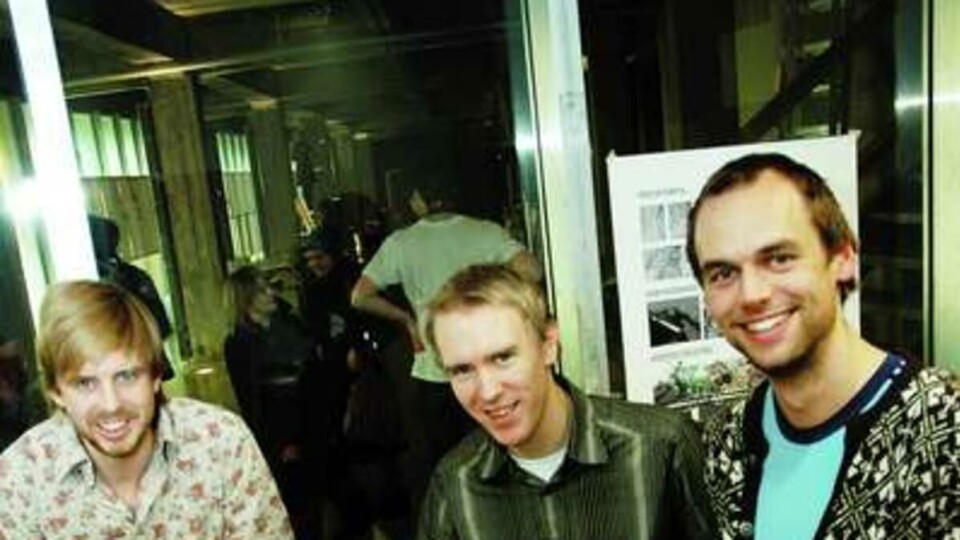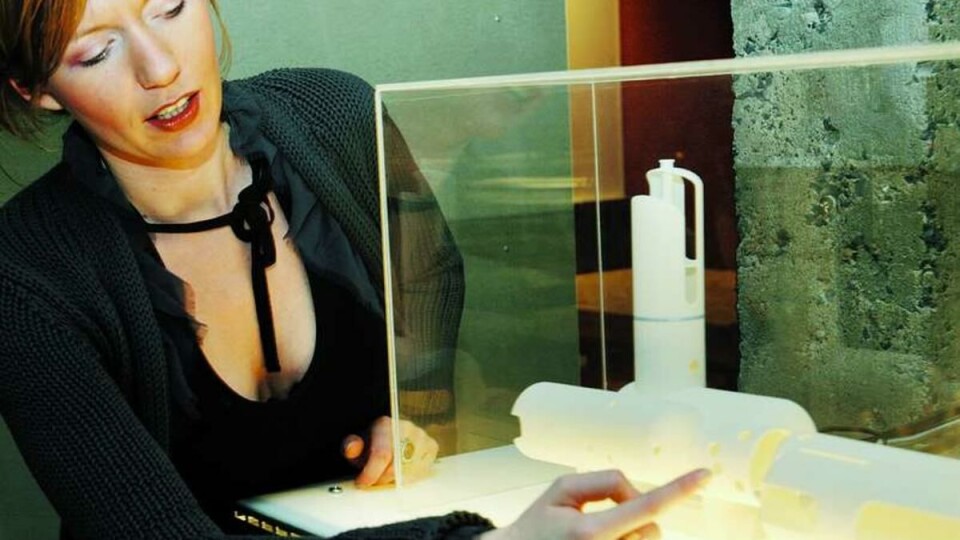
Design Elitism
Competitiveness is important to students at The Oslo School of Architecture and Design.


There is a Diploma exhibition this evening. Champagne bottles are opened and well-shaped models are uncovering themselves before the eyes of captivated bystanders. Miniature buildings are tastefully presented on platters for the hungry eye. Meanwhile, budding designers are working in a rundown workshop right next to the exhibition. Study mates Øystein Austad and Jonas Ravlo Stokke are glancing modestly out of the glass wall at the stressed-out students who are running about in the dimmed light outside.
– I never envy people who do well in contests. On the contrary, I am pleased and inspired, Ravlo Stokke explains. He has taken part himself in the world’s largest design contest, the Index:2005, but didn’t quite reach the top.
Nevertheless, Austad and Ravlo Stokke have been named rookies of the year by ELLE, and they have also been mentioned in the renowned design magazine Wallpaper. The two have recently started their own business called StokkeAustad.
Time pressure
Combining studies with design has proven to be difficult, and thus Austad and Ravlo decided to postpone their Diploma paper for one semester.
– The professors aren’t always thrilled, but I don’t feel the pressure for marks. The objective is to create a workplace, and we are making headway in doing so, Austad says.
– Students obviously take part in contests in order to be seen. We have a long tradition for participating in international contests, Karl Otto Ellefsen, Rector at The Oslo School of Architecture and Design (AHO) explains.
He is not hostile towards part-time work.
– We have encountered a few major issues with students participating in international contests. This applies to both student contests and Architecture and Design contests open to the public. But my experience is that this only increases the competence of students rather than affect their studies, he says.
Glass and gas tank

A couple of exhausting steps upwards, in an open office landscape decorated with a forest of lamps, there is another award-winning Design student; Grethe Løland. Like Ravlo Stokke, she took part in Index:2005 in the category play, where she reached the final.
– I have always been interested in the environment. With regards to this contest, I found a way to recycle old oil and gas tanks, Løland explains.
She is also showing a model inside a small showcase. Tiny, cylinder-shaped miniature tanks are attached and end up in a tower of stairs where you can get in and out. The entire model is coloured like an egg shell and looks as if it is about to fall apart at any given moment. The idea is that you would be able to explore fauna and flora down below in an environmental fashion.
New age
According to Rector Ellefsen, the students of Architecture are the best. Floire Nathanael Daub is an Architecture student and has already participated in three contests. Last time around, he won a competitive tendering for the Research Council of Norway, and the result will be exhibited this autumn.
– We make an impact when taking part in contests, and I think it is an important way to distinguish ourselves from the crowd, Daub says.
Professor and author of Industrial Design Per Farstad believes that a good mixture of contests and studies is healthy.
– I used to be more negative to contests because they interfered with teaching and learning too much. But over the years, a lot of exciting designs have come out of these contests.






























